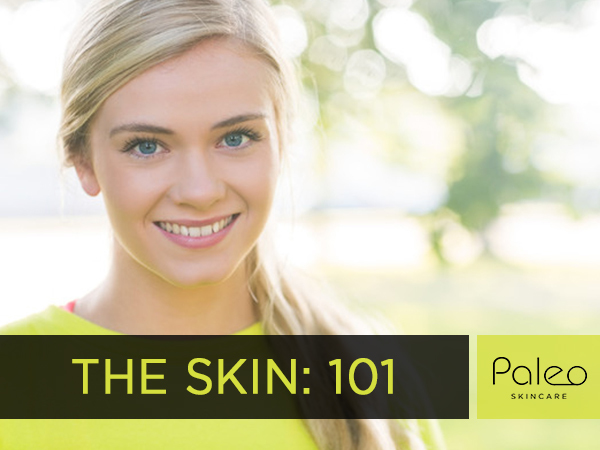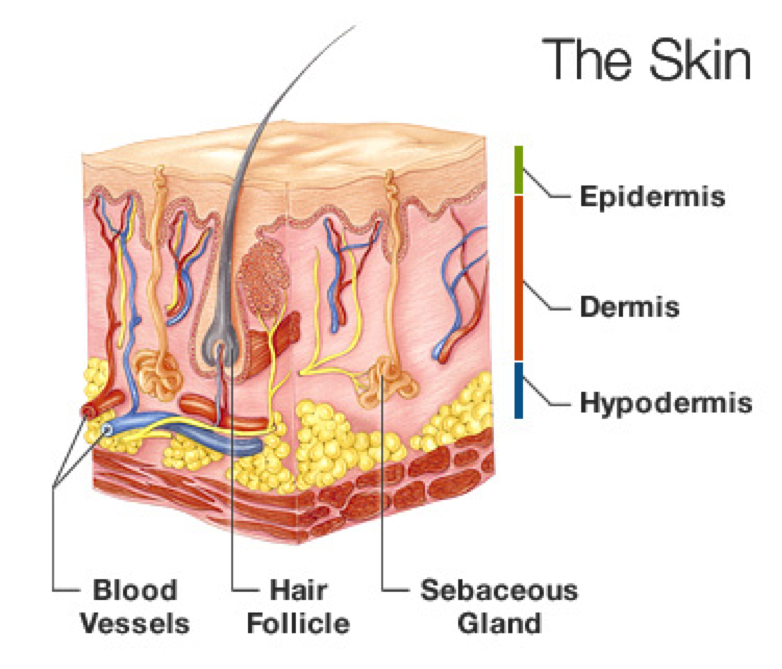The Skin:101

The skin is said to be the largest organ and if you believe everything you read it needs a massively huge array of ingredients and ailments to keep it healthy.
What most people don't know, or forget that the skin is, in fact, a complicated system. It protects, rejuvenates, creates, sheds, lets things in, lets things out, sags, stretches, it is supple, soft, sometimes angry, sometimes calm.
Because it is a complicated and wonderful ecosystem, when it is supported with the right environment and tools it can hold its own.
Let's get back to basics.
An Overview of the Skin
Your skin is the largest organ on your body, made up of several different components, including water, protein, lipids, and different minerals and chemicals.
On average, your skin weighs about six pounds. Its job is crucial: to protect you from infections and germs.
Throughout your life, your skin will change constantly, for better or worse. In fact, your skin will regenerate itself approximately every 27 days.
Proper skin care is essential to maintaining the health and vitality of this protective organ.
How Does My Skin Work?
There are medical terms for various parts of your skin. Here's a rough guide to what those terms mean.
Stratum corneum: The Outer Layer of Dead Skin
The stratum corneum contains dead skin cells that used to exist in the epidermis. Using facial scrubs and some other skin products will remove or thin this layer.
Epidermis: The Outer Layer of Skin
The epidermis is the thinnest layer of your skin, but it's responsible for protecting you from the harsh environment. The epidermis has four layers of its own: stratum germinativum, stratum spinosum, stratum granulosum, and stratum lucidum. The epidermis also hosts different types of cells: keratinocytes, melanocytes, and Langerhans cells. Keratinocytes produce the protein known as keratin, the main component of the epidermis. Melanocytes produce your skin pigment, known as melanin. Langerhans cells prevent foreign substances from getting into your skin.
Dermis: The Middle Layer of Skin
This is the layer responsible for wrinkles. The dermis is a complex combination of blood vessels, hair follicles, and sebaceous (oil) glands. Here, you'll find collagen and elastin, two proteins necessary for skin health because they offer support and elasticity. Fibroblasts are the cells you'll find in this layer because they synthesize collagen and elastin. This layer also contains nerves that sense pain, touch, and temperature.
Subcutis: The Skin's Fatty Layer
Reduction of tissue in this layer is what causes your skin to sag as well as wrinkle. This layer hosts sweat glands, and fat and collagen cells. The subcutis is responsible for conserving your body's heat and protecting your vital inner organs.
All of these layers aren't very thick so it is amazing to think that all of this goes in within them. And it is easy to see where the support needs to be to have soft supple skin.
There are a few other points worth mentioning that help with understanding what your skin needs to look radiant.
Collagen and Your Skin
Collagen is found in the dermis and is the most abundant protein in the skin, making up 75% of this organ. This is also your fountain of youth. It's responsible for warding off wrinkles and fine lines. Over time, environmental factors and aging diminish your body's ability to produce collagen and can also break down existing collagen.
Your Skin and Elastin
When you hear the word elastin, think elastic. This protein is found with collagen in the dermis and is responsible for giving structure and support to your skin and organs. As with collagen, elastin is affected by time and the elements. Diminished levels of this protein cause your skin to wrinkle and sag.
Keratin and Your Skin
Keratin is the strongest protein in your skin. It's also dominant in hair and nails. Keratin is what forms the rigidity of your skin.
The idea is to feed the skin from the inside out more so from the outside in. Everything you put into your mouth will show up on your face and other areas of your body.
Of course, Paleo Skincare's philosophy also extends to providing your skin with the best ingredient it needs and wants in order to not only have a healthy ecosystem but to also enable us to look radiant and even younger.
